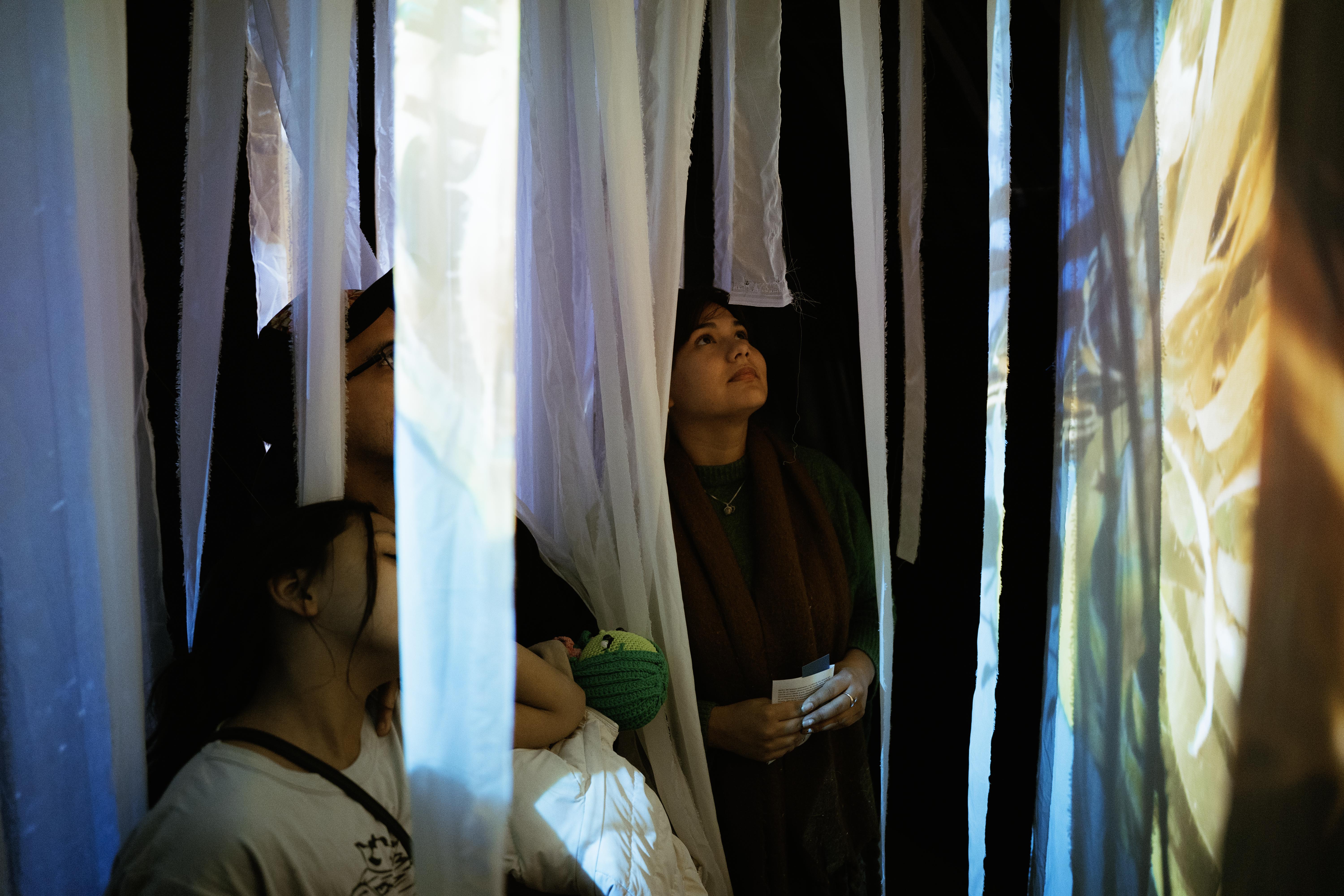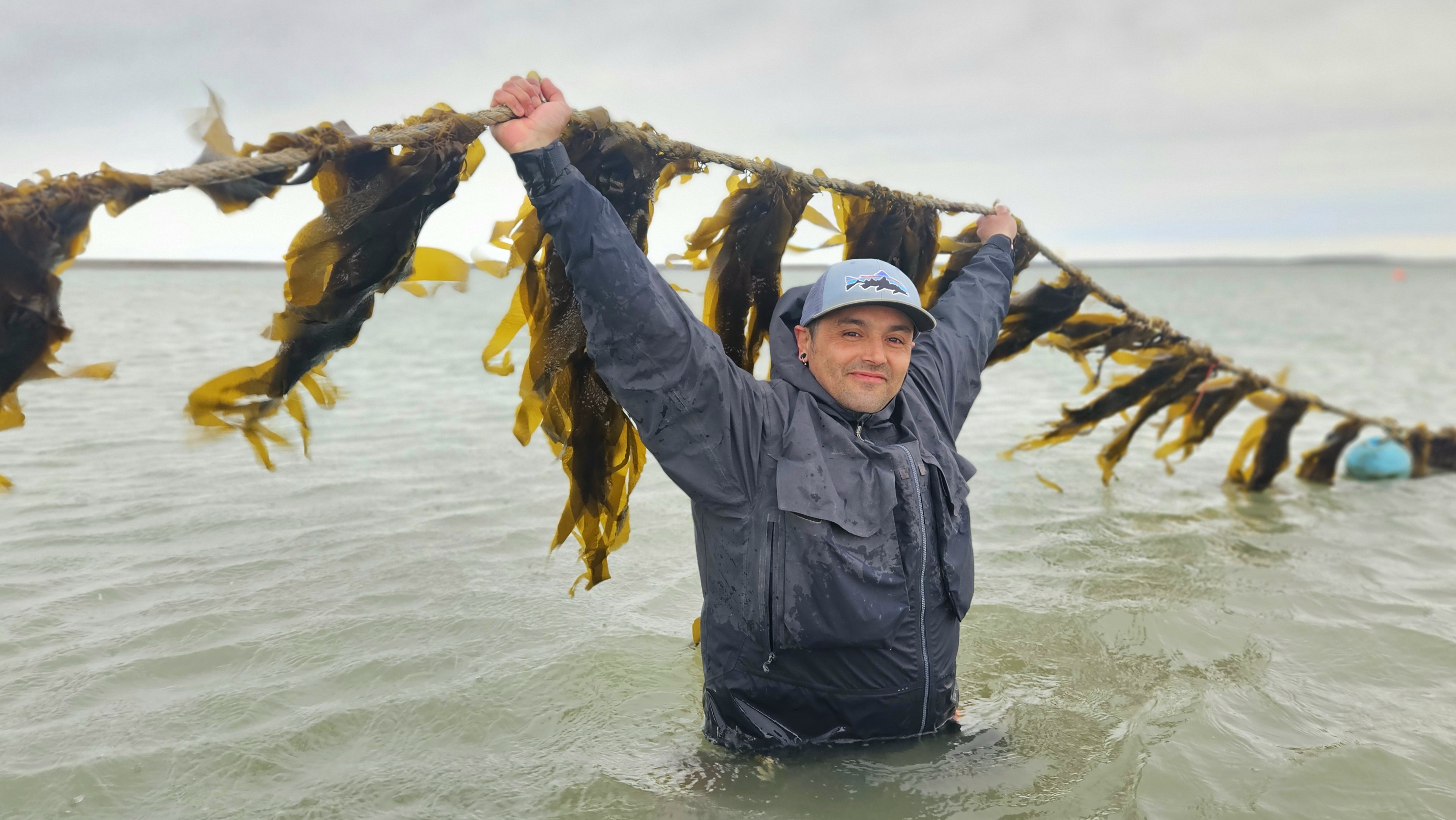This organization is
reshaping marine
conservation
in Argentina
In Conversation with Martina Sasso, director of Por El Mar.
BY BACKGROUND
PHOTOS BY POR EL MAR (1), CRISTIAN LAGGER (2), MARIANO BERTINAT (3), ADAM MOORE (4) AILIN PEIRONE (5)
.jpg)
Martina Sasso leads Por el Mar, an Argentine organization founded in 2022 with a clear purpose: to protect the ocean by weaving together applied science, legal tools, community roots, and creative communication. Before launching their own initiative, the team drove the marine program at Rewilding Argentina and took part in milestones such as the creation of national marine protected areas and the ban on salmon farming in Tierra del Fuego. Today, their focus lies in Patagonia — Tierra del Fuego, Santa Cruz, and Río Negro — with projects seeking tangible outcomes aligned with their guiding principle:
How did Por el Mar begin, and why did you choose to focus on places where almost no one else was looking?
We came from five years working in marine conservation within Rewilding Argentina, where we created the foundation’s first marine program. We achieved huge milestones, like the establishment of the first marine protected areas in national waters (Yaganes and Namuncurá–Burdwood) and the ban on salmon farming in Tierra del Fuego. But beyond those advances, we saw something missing: an organization dedicated exclusively to the sea. More than 45% of Argentina’s territory is ocean, yet most conservation work was happening on land. So, in 2022, we took the leap. Eleven of us left to found Por el Mar with a simple idea — to complement, not to duplicate. While most organizations were working in Chubut, we decided to start in Tierra del Fuego, Santa Cruz, and Río Negro — places where the void was immense.
What was the organization’s first major milestone?
Without a doubt, the creation of Península Mitre Provincial Park, the largest protected area in the country, spanning almost 7,000 km² of sea and land. That project changed us. It made us see the ocean differently — it was there we discovered the magnitude of kelp forests, the underwater equivalent of terrestrial forests.
.jpg)
Thanks to our collaboration with Stanford University and MASCEL, we mapped their distribution and found something extraordinary: Argentina holds nearly 30% of the world’s kelp ecosystem. Protecting it here means making a real contribution to the global 30×30 target. So far, we’ve protected around 66% of the country’s kelp forests, and our goal is to reach 90% by 2027.
How did you move from kelp forests to sharks?
While studying the forests, we noticed something unsettling: the sharks were gone. After months of research, we concluded that Patagonia had lost about 80% of its shark populations. That’s how Guardianes del Mar was born — a project to protect and restore five key species. To do this, we partnered with TAG A Giant, a Stanford University program leading satellite tagging of white sharks worldwide. They came to Argentina, and now we’re gathering unique data on shark movements. We call this fast science: rigorous, well-funded research done with the best teams, but at a pace that allows action before it’s too late.
Why did you decide to create a kelp farm?
Because we realized that protection alone, without economic alternatives, isn’t enough. Policy needs options that generate local value. That’s why we designed the country’s first model for cultivating native seaweed (Macrocystis pyrifera). We built a farm and hatchery in San Julián, where kelp grows up to 30 centimeters a day. Our goal is to prove that production doesn’t have to mean destruction — using seaweed to make natural biostimulants and livestock feed. At the same time, we’re pushing for laws that ban direct kelp extraction, what we call “underwater deforestation.” It’s our way of linking conservation, development, and productive sovereignty.
What’s the goal of the “Five Giants Corridor”?
It’s a conservation initiative along the Río Negro coast, between San Antonio Oeste and Viedma, aimed at protecting the habitat of orcas, southern right whales, bottlenose dolphins, sea lions, and sharks.
We adapted the logic of the terrestrial “Big Five” to the ocean. The project is currently in its scientific expedition phase, but its long-term goal is to develop management tools to safeguard these species over time.
How do you connect with other organizations around the world?
After the salmon farming ban in Tierra del Fuego, we created GSFR (Global Salmon Farming Resistance) — a global network that now brings together 19 countries and over 110 organizations fighting to remove fish farms from the sea. We also collaborate with universities, NGOs, and research centers worldwide. But we hold to a simple rule: we don’t repeat what others are already doing, and we don’t try to be experts where expertise already exists. We team up with those who know more and contribute where we can accelerate results.
How do you manage to move so quickly with such large projects?
Por el Mar works like a laboratory, following a demanding but straightforward formula: applied science — with our own boats and field teams at sea; legal tools, because lasting conservation comes through law; community stewardship, meaning deep local roots; and communication and activism, to inspire and mobilize society. Each project is designed in four-year cycles, with clear, measurable goals. If the goal takes longer, we open a new cycle. But the key is maintaining momentum: not waiting ten years to do what can be done in four.
How do you fund your work and remain independent?
Our projects are funded through international philanthropy, but we always start from an internal idea, never an external request. First, we identify an environmental need and design an action plan. Then we look for those who want to join.We don’t work “to fit the donor,” but instead present a portfolio of projects with measurable outcomes. Sometimes donors come along, sometimes they don’t — and that’s fine. What matters is maintaining transparency, communication, and focus on impact.How do you reach the general public and build connection? We have an in-house communications team that designs experiences rather than campaigns. For example, we created an immersive dome that recreates the feeling of being inside a kelp forest and took it to towns across Patagonia with the support of Andreani.

"We also hope to leave a cultural imprint: to show that conservation can mean development, work, and innovation."
We’ve also launched a
planetarium linking the sea and the sky, a
children’s play, and even workshops blending yoga, craft beer, and seaweed drawing. Everything counts if it helps people connect. The idea is simple:
when people fall in love with a place, they defend it. And when society defends it, politics listens.
In a recent interview we did with Patagonia’s Communications Lead, Gin Ando, he spoke about the importance of going outside — of experiencing and enjoying nature — as a way to love and then protect it. How does that connection between enjoyment and care live within Por el Mar?For us, it’s not a concept — it’s daily life.
The team lives by the sea. We sail, kayak, go on expeditions, do field monitoring. There’s no way to care for what you don’t love, and there’s no love without contact. That balance between joy and responsibility is what sustains
Por el Mar’s culture.

How do you imagine the organization’s future?
We want to go deeper, not broader — to consolidate what we’ve built, scale what works, and act as a catalyst for other local organizations to grow. If we do things right, in five years we’ll face new challenges, but we’ll also have a stronger ecosystem across Patagonia. We also want to leave a cultural mark: to show that conservation can be synonymous with development, work, and innovation.
What message would you like to leave for those who made it to the end of this interview?
Be brave. Try, fail, adjust, and try again. The planet has changed, and conservation must change with it. The only way to protect the ocean is to dare to do things differently. That, at its core, is the essence of Por el Mar.
Twice a month. A message from our hearts.
Sign up for updates on outdoors, adventure, climate and sustainability.
.jpg)
.jpg)


